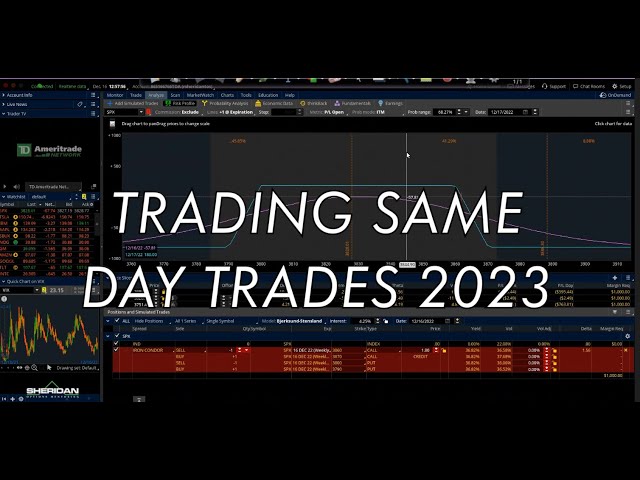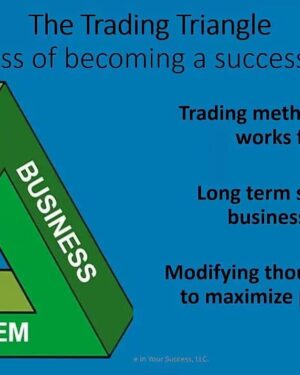2023 Directional Calendars by Dan Sheridan & Mark Fenton
$1,997.00 Original price was: $1,997.00.$45.00Current price is: $45.00.
Description
In 2023, traders and investors are eagerly seeking new strategies to navigate the ever-changing financial world. Enter Dan Sheridan and Mark Fenton, two seasoned experts who have developed a groundbreaking approach known as Directional Calendars. As an experienced trader myself, I have been closely following their work and I must say, it’s truly impressive.
Directional Calendars offer a unique perspective on market movements, allowing traders to anticipate trends and make informed decisions. With their combined expertise, Sheridan and Fenton have crafted a system that takes into account various factors such as market volatility, economic indicators, and historical patterns. The result is a comprehensive calendar that provides valuable insights into potential market directions.
In this text, we will investigate deeper into the world of Directional Calendars and explore how they can be effectively utilized in 2023. Whether you’re a novice trader looking to enhance your skills or a seasoned investor seeking an edge, Sheridan and Fenton’s approach is definitely worth exploring. So, let’s immerse and discover the power of Directional Calendars in the year ahead.
What are Directional Calendars?
Directional Calendars, developed by Dan Sheridan and Mark Fenton, are a new approach that can help traders and investors navigate the financial world with more confidence. These calendars are designed to provide valuable insights into market movements and trends, enabling individuals to make more informed trading decisions.
So, what exactly are Directional Calendars? They are comprehensive calendars that take into account various factors such as market volatility, economic indicators, and historical patterns to create a roadmap for potential market movements. This innovative approach aims to assist traders in identifying key dates and periods when markets are more likely to experience significant price changes or trends.
By having access to a Directional Calendar, traders and investors can better plan their trading strategies, whether they are looking to capitalize on short-term price movements or long-term trends. These calendars can help individuals identify potential entry and exit points, highlight periods of higher market volatility, and provide insights into historical patterns that may repeat in the future.
It’s worth noting that Directional Calendars can be particularly valuable in 2023, given the anticipated market conditions and potential economic shifts. Whether you are a novice trader or a seasoned investor, exploring the use of Directional Calendars can provide you with a strategic advantage in your trading activities.
To summarize, Directional Calendars are a powerful tool that can enhance your trading decisions by providing insights into market movements and trends. By leveraging the information provided by these calendars, you can make more informed trading choices and build a successful trading strategy. So, why not consider incorporating Directional Calendars into your trading arsenal in 2023?
The Expertise of Dan Sheridan and Mark Fenton
When it comes to exploring the complex world of trading and investing, having the right expertise is key. That’s where Dan Sheridan and Mark Fenton come in. With years of experience and a deep understanding of market dynamics, they have developed Directional Calendars that can provide valuable insights for traders and investors.
Dan Sheridan is a renowned options trader and educator with over two decades of experience in the industry. He has appeared on financial networks such as CNBC and Bloomberg and is known for his expertise in options trading strategies. Mark Fenton, on the other hand, is an expert in technical analysis and market forecasting. He has analyzed market trends for years and developed tools to help traders make informed decisions.
Together, Sheridan and Fenton have created Directional Calendars that take into account various factors such as market volatility, economic indicators, and historical patterns. These calendars provide a comprehensive view of potential market movements and help traders identify entry and exit points.
One of the advantages of Directional Calendars is that they are based on historical data. By analyzing past market patterns, Sheridan and Fenton can identify potential trends and predict potential price movements. This allows traders and investors to better plan their strategies and adapt to changing market conditions.
Plus, Sheridan and Fenton’s expertise allows them to incorporate current market conditions into their analysis. They closely monitor economic indicators and market news to provide up-to-date insights to traders. This ensures that traders have the most relevant information to make informed decisions.
By utilizing Sheridan and Fenton’s Directional Calendars, traders and investors can gain a strategic advantage in the financial markets. These calendars not only provide insights into potential market movements but also help identify historical patterns that may repeat in the future. This can be particularly valuable in 2023, given the anticipated market conditions and potential economic shifts.
To conclude, the expertise of Dan Sheridan and Mark Fenton is invaluable for traders and investors. With their Directional Calendars, they provide a powerful tool that can enhance trading decisions and improve overall performance in the financial markets. By incorporating their insights into their trading strategies, traders can navigate the markets with more confidence and achieve better results.
Understanding the Components of a Directional Calendar
When it comes to utilizing Directional Calendars, it’s essential to understand the key components that make them a valuable tool for traders and investors. Here are the main elements to consider:
1. Market Volatility: Directional Calendars take into account market volatility, which refers to the degree of price fluctuations in a particular market. By incorporating this important factor, traders can gain insights into potential market movements and adjust their strategies accordingly.
2. Economic Indicators: These calendars also analyze economic indicators, such as GDP growth, inflation rates, and unemployment rates. These indicators provide a snapshot of the overall health and performance of the economy, which can significantly impact market trends. By considering economic indicators, traders can make more informed decisions based on the current economic climate.
3. Historical Patterns: Directional Calendars incorporate historical patterns to identify potential market patterns that may repeat in the future. By examining past market data, traders can gain insights into how certain events or conditions have influenced market behavior in the past, helping them anticipate future market movements.
4. Current Market Conditions: Directional Calendars also take into account the current market conditions to provide up-to-date insights. By analyzing real-time data and monitoring market trends, traders can identify opportunities and make informed decisions based on the current market environment.
By understanding these components, traders and investors can effectively use Directional Calendars to navigate the financial markets with more confidence and improve their trading strategies. These calendars provide valuable insights into market volatility, economic indicators, historical patterns, and current market conditions, empowering traders to make more accurate and informed decisions.
Analyzing Market Volatility in 2023
To navigate the financial world effectively, it is crucial to analyze market volatility. As a trader or investor, understanding market volatility can help you make more informed decisions and adjust your strategies accordingly.
Here’s a closer look at analyzing market volatility in 2023:
Historical Patterns: Examining past market trends and patterns can provide valuable insights into future volatility. By studying historical data, I can identify recurring patterns and trends that can help guide my decision-making process.
Economic Indicators: Economic indicators, such as GDP growth, inflation rates, and interest rates, have a significant impact on market volatility. Monitoring and analyzing these indicators can provide clues about potential market movements in 2023.
Current Market Conditions: Keeping a close eye on current market conditions is essential. Factors such as geopolitical events, corporate earnings, and news releases can influence market volatility. By staying informed about these factors, I can better anticipate and navigate market fluctuations.
Directional Calendars: Incorporating Directional Calendars into my analysis can enhance my understanding of market volatility. These calendars consider various factors, including historical patterns, economic indicators, and current market conditions, to provide insights into potential market movements.
By analyzing market volatility in 2023, I can stay ahead of the curve and make more informed decisions as a trader or investor. Understanding the interplay between historical patterns, economic indicators, current market conditions, and Directional Calendars is key to achieving success in the financial world. So, remember to pay close attention to market volatility and continually adapt your strategies to optimize your trading and investment performance.
Utilizing Economic Indicators for Directional Trading

As a trader or investor in the financial market, it is crucial to understand and use economic indicators to make informed decisions. By analyzing and interpreting these indicators, you can gain valuable insights into the direction of the market and potentially enhance your trading performance.
Economic indicators are statistical data points that provide information about the overall health and performance of an economy. They can include factors such as unemployment rates, inflation, GDP growth, consumer confidence, and industrial production. By monitoring these indicators, you can gauge the strength and stability of the economy and identify potential market trends.
Here are some key points to consider when utilizing economic indicators for directional trading:
Stay updated: Stay informed about the latest economic data releases and reports. This information can help you understand current market conditions and identify potential opportunities or risks.
Historical patterns: Analyze historical patterns and correlations between economic indicators and market movements. Look for consistent patterns that can guide your trading decisions.
Intermarket analysis: Consider the relationship between different markets and how changes in one market may impact others. For example, changes in interest rates may affect currency markets or bond markets.
Leading vs. lagging indicators: Different economic indicators have different time frames and levels of significance. Leading indicators, such as purchasing managers’ index (PMI) or housing starts, can provide early signals of economic trends. Lagging indicators, such as unemployment rates or GDP growth, confirm trends that have already occurred. Understanding the difference can help you anticipate market movements.
Use of technical analysis: Combine economic indicators with technical analysis tools to confirm or validate your trading decisions. Technical analysis examines historical price and volume data to forecast future market trends.
By utilizing economic indicators, you can make more informed trading decisions and potentially improve your trading performance in the dynamic financial markets. Stay updated, analyze historical patterns, consider intermarket relationships, distinguish leading from lagging indicators, and use technical analysis to enhance your directional trading strategies.
Exploring Historical Patterns and their Relevance in 2023

When it comes to directional trading, examining historical patterns can provide valuable insights for traders and investors. By analyzing past trends and behaviors of economic indicators, we can gain a better understanding of potential market movements in 2023. Let’s take a closer look at the importance of historical patterns and their relevance for directional calendars.
1. Identify Key Historical Data Points: Start by identifying key economic indicators that have shown consistent patterns over time. Look for data points that have historically had a strong impact on the financial markets, such as GDP growth, unemployment rates, or interest rate changes.
2. Analyze Historical Trends: Once you have identified the relevant economic indicators, analyze their historical trends to identify any repetitive patterns. Look for recurring cycles, seasonal variations, or specific events that have influenced the market in the past. This historical analysis can help you anticipate potential market movements in 2023.
3. Consider Longer-Term Historical Patterns: It’s essential to consider longer-term historical patterns when developing directional calendars for 2023. Look for trends that have persisted over several years or economic cycles. These longer-term patterns can provide insights into the market’s overall direction and potential turning points.
4. Pay Attention to Historical Correlations: Plus to studying individual economic indicators, pay attention to the historical correlations between different indicators. Certain indicators may have a strong relationship with others, which can help you gain a broader perspective on the market’s behavior. For example, the correlation between the stock market and interest rates can provide insights into potential market trends.
5. Combine Historical Patterns with Current Market Information: Remember to combine historical patterns with current market information to make informed decisions for 2023. While historical patterns can provide valuable insights, it’s essential to consider current economic conditions, geopolitical events, and other factors that may influence the market in the present.
By exploring historical patterns and their relevance for directional calendars in 2023, traders and investors can gain a deeper understanding of potential market trends. Remember to stay updated on economic data releases, analyze intermarket relationships, and use technical analysis to validate your trading decisions. With this knowledge in hand, you can make more informed and potentially profitable trading decisions in the year ahead.
Tips and Strategies for Using Directional Calendars Effectively
When it comes to utilizing directional calendars for trading in the financial market, there are several key tips and strategies that can help you improve your results. Let’s dive right in:
Identify Key Historical Data Points: Start by identifying the most important historical data points that are relevant to your trading strategy. This could include economic indicators, company earnings reports, or geopolitical events. By knowing which data points have the greatest impact on the market, you can focus your attention on them and make more informed trading decisions.
Analyze Historical Trends: Take the time to analyze historical trends associated with the identified data points. Look for patterns and recurring behaviors that can provide insights into future market movements. By studying the past, you can gain a better understanding of how certain events or factors have historically influenced the market.
Consider Longer-Term Historical Patterns: While short-term trends can be useful, it’s also important to consider longer-term historical patterns. Market cycles and overall market conditions can play a significant role in driving price movements. By understanding these longer-term patterns, you can better anticipate market trends and adjust your trading strategy accordingly.
Pay Attention to Historical Correlations: Another useful tip is to pay attention to historical correlations between different assets or markets. Certain assets may have a strong correlation with each other, meaning that when one moves, the other is likely to follow suit. By understanding these correlations, you can potentially spot opportunities for trading pairs or determine the impact of one market on another.
Combine Historical Patterns with Current Market Information: Finally, it’s important to combine historical patterns with current market information. By staying up to date with current news, economic developments, and market conditions, you can enhance your directional calendar analysis. This combination of historical patterns and current information can provide a more holistic view of the market and potentially lead to more successful trading decisions.
By implementing these tips and strategies, you can effectively use directional calendars in your trading endeavors. Remember, these calendars are tools that can help you make more informed and potentially profitable trading decisions, but they should not be the sole basis for your trading strategy. Continuously educate yourself, stay informed, and adapt your approach as needed to stay ahead in the ever-changing financial market world.
Conclusion
Incorporating directional calendars into your trading strategy can be a valuable tool for exploring the financial market in 2023. By exploring historical patterns and analyzing key data points, you can gain insights into potential market trends and make more informed trading decisions.
In this text, I have discussed the importance of utilizing economic indicators and historical data to create directional calendars. By considering longer-term patterns and historical correlations, you can enhance your understanding of market movements and increase your chances of success.
But, it’s crucial to remember, directional calendars should not be the sole basis for your trading strategy. The financial market is constantly evolving, and it’s essential to continuously educate yourself, stay informed, and adapt your approach as needed.
By implementing the strategies and tips provided in this text, you can enhance your directional calendar analysis and increase your chances of making profitable trades in 2023.
So, start incorporating directional calendars into your trading arsenal, stay proactive, and seize the opportunities that the financial market has to offer. Happy trading!
Frequently Asked Questions
Q: What is the article about?
A: The article emphasizes the importance of utilizing economic indicators for directional trading in the financial market and provides strategies to identify key historical data points and analyze historical trends.
Q: What does the article discuss about directional calendars in 2023?
A: The article discusses the significance of exploring historical patterns and their relevance for directional calendars in 2023.
Q: How can traders benefit from the strategies mentioned in the article?
A: By incorporating the strategies mentioned in the article, traders and investors can gain a deeper understanding of potential market trends and make more informed and potentially profitable trading decisions in the year ahead.
Q: Are there additional tips and strategies provided in the article?
A: Yes, the article also provides additional tips and strategies for using directional calendars effectively, including considering longer-term historical patterns, paying attention to historical correlations, and combining historical patterns with current market information.
Q: What is the caution mentioned in the article?
A: It is important to remember that directional calendars should not be the sole basis for a trading strategy, and traders should continuously educate themselves, stay informed, and adapt their approach as needed in the ever-changing financial market world.
Related products
-
- Sale!
The Holy Grail Of Sales by Robyn and Trevor Crane
-
$499.00Original price was: $499.00.$42.59Current price is: $42.59.
-
- Sale!
Advanced Personal and Position Management (APM2 Course) by John Locke
-
$599.00Original price was: $599.00.$24.99Current price is: $24.99.
-
- Sale!
The Trading Triangle Maui 2016 – John Locke
-
$599.00Original price was: $599.00.$42.59Current price is: $42.59.




